Contents
OCCUPATIONAL HEALTH AND SAFETY IN CEMENT INDUSTRY
Attention!! to Download Most Important Books in Cement industry reviewed from more than two thousands people + Manuals and notes from big Cement Companies like F L S , Holcim Lafarge , Cemex , + Excel sheets for calculations process Click here Now
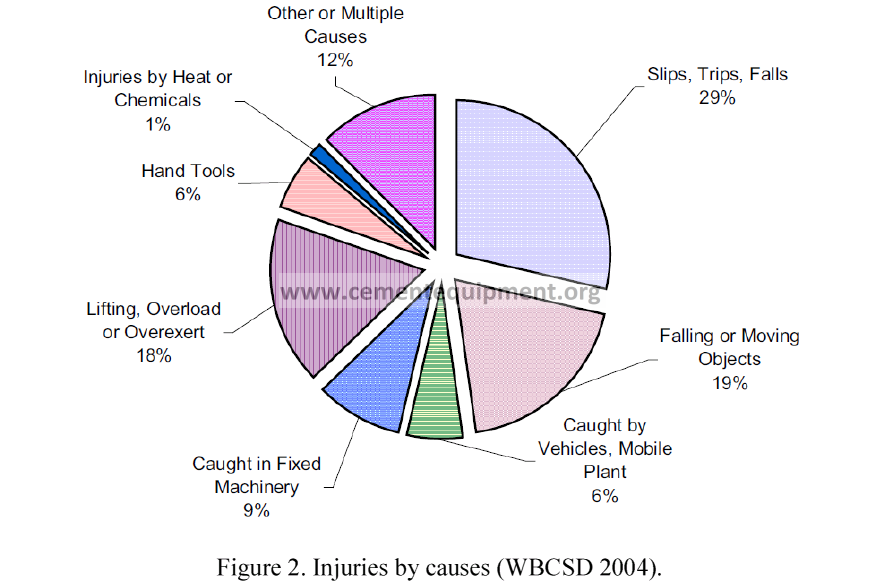
Cement is the basic material for constructions which is made from a mixture of elements that are found in natural materials such as limestone, marl and/or clay. Cement manufacturing is an energy and resource intensive process with both local and global environmental, health and safety impacts. Because of these impacts, ensuring healthy and safe working conditions for employees is one of the most significant issues for the cement industry. In this review, cement manufacturing process was clarified briefly and potential hazards and their risks in cement industry were investigated.
INTRODUCTION
Occupational health and safety has become a public health priority in industrialized countries and a primary concern, especially in high risk industries (Rachid et. al. 2015). Cement manufacturing is one of these industries. Cement is one of the most widely used construction material on earth. Because cement has been used commonly, its health effects have become an important issue both for employees and the environment (Koh et. al. 2011). In addition to the various health hazards, cement workers are especially exposed to dust which causes lung function impairment, chronic obstructive lung disease, restrictive lung disease, pneumoconiosis and carcinoma of the lungs, stomach and colon at various production process such as quarrying, crushing, raw material grinding, blending, kiln burning, cement grinding and packaging in cement industry (Meo 2004). Therefore, ensuring healthy and safe working conditions for employees and contractors is a fundamental key to corporate social responsibility, and is one of the most important issues for the cement industry (WBCSD 2004).
In addition, with the increasing complexity of industrial tissue and with the rapidity that the techniques develop in the big factories, risks assessment becomes a crucial and strategic answer to preserve workers health and safety on the one hand and to maintaining a qualified labor on the other hand (Tomar 2014).
The main objectives of this literature review are to define specific hazards in cement manufacturing process and investigate the health and safety risks from manufacturing process.
CEMENT MANUFACTURING PROCESS
Cement is a fine powder that consists of a mixture of hydraulic cement materials comprising primarily calcium silicates, aluminates and aluminoferrites. More than 30 raw materials, which are divided into four basic categories (calcium, silica, alumina, iron), are known to be used in the manufacture of portland cement (EPA 1994). These raw materials are presented in Table 1.
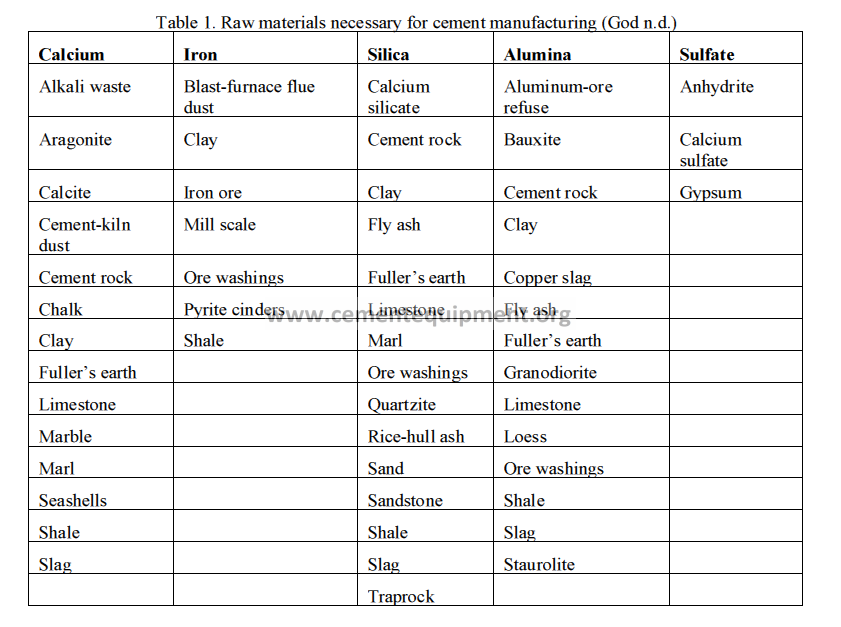
Cement manufacturing process comprises of crushing, grinding, raw meal preparation, kiln burning and cement production basically. The following figure shows the process flow of a typical cement factory (Figure 1).
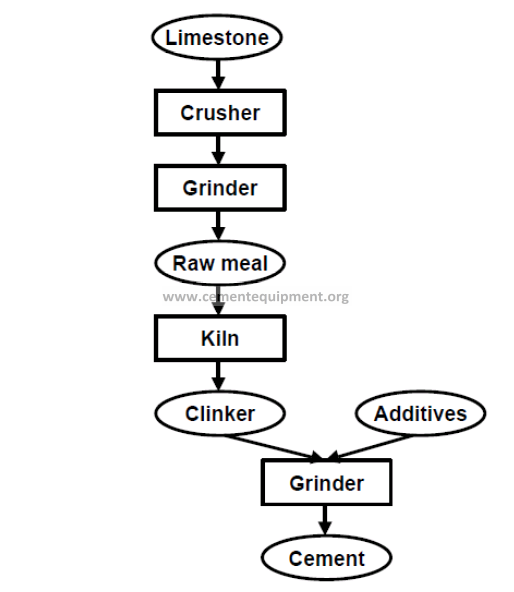
Figure 1: Simplified process flow of a typical cement manufacturing (Kema, Inc. 2005)
Quarrying of limestone and is performed by using explosives and all of the raw materials (limestone, marn, clay…etc) are transported to the plant. These raw materials are crushed, finely ground, and blended to the correct chemical composition. The fine raw material is fed into a large rotary kiln (cylindrical 4 furnace) which rotates while the contents are heated to extremely high (EPA 2010). The most commonly used kiln fuels are coal, natural gas, and occasionally oil (EPA 1994). Rotary kiln is heated by a 2000°C flame inside of it. The kiln is slightly inclined to allow for the materials to slowly reach the other end, where it is quickly cooled to 100-200°C (CEMBUREAU). Following re-cooling, the clinker is stored in silos , and then transformed into cement by using gypsum and other additives according to the production requirements. Finally, the cement is stored in silos and loaded on a truck or packaged into bags (LAFARGE).
CLASSIFICATION AND DEFINITION OF THE HAZARDS IN CEMENT MANUFACTURING
Cement manufacturing processes including health and safety risks were classified as follows:
- Quarrying
- Crushing
- Clinker production
- Milling processes at raw mill, cement milling and coal milling
- Material transport
- Filtering
- Storage
- Loading and delivery of final products
- Fuel storage activities
- Use of hazardous material
- Generating units (TRIA Project).
In Table 2, main hazard factors associated with cement manufacturing processes are presented. As shown from Table 2, main hazardous factors in quarrying of raw materials can be defined as dust and noise. Noise emits during balsting, crushing and operation of conveyors in quarrying operations. Noise sources in cement manufacturing plant mainly include milling machines, crushers, electric motors (Canfeng 2012).

Dust emissions are one of the most significant impacts of cement manufacturing and associated with handling and storage of raw materials (including crushing and grinding of raw materials), solid fuels, transportation of materials (e.g. by trucks or conveyor belts), kiln systems, clinker coolers, and mills, including clinker and limestone burning and packaging/bagging activities (IFC 2007). Packaging is the most polluting process (in terms of dust) in cement production (Cumbane 2011).
Nitrogen oxide (NOX) emissions are emitted from the high temperature combustion process of the cement kiln. Carbon dioxide defined as greenhouse gas is mainly associated with fuel combustion and with the decarbonation of limestone (IFC 2007).
In addition to specific hazards, there are also general hazards in all of the cement manufacturing process such as safe behavior, work equipment, safety labeling, personal protective equipment (PPE), manual load handling (TRIA Project).
Typical injury causes in cement plants are defined as slips, trips and falls (29%); falling or moving objects (19%) and lifting, overload and exertion (18%) as shown from Figure 2. Fatalities are the most serious tragedy that can happen in the cement Industry. 79% of all fatalities arise from 3 main causes: Traffic & Mobile Plant (43%), Falls from Heights & Items falling (21%) and Caught in Moving/Starting Equipment (15%). It was reported that contractors and young/temporary employees are high risk categories in cement manufacturing plants (WBCSD 2004).

An example of potential hazards and preventive actions in a cement manufacturing plant was presented in Table 3.
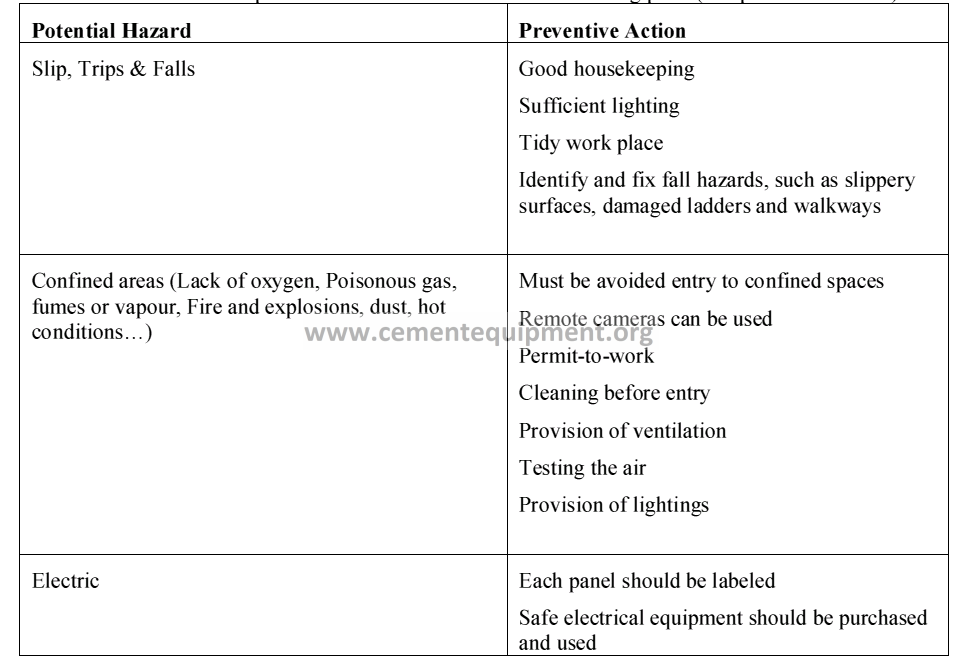
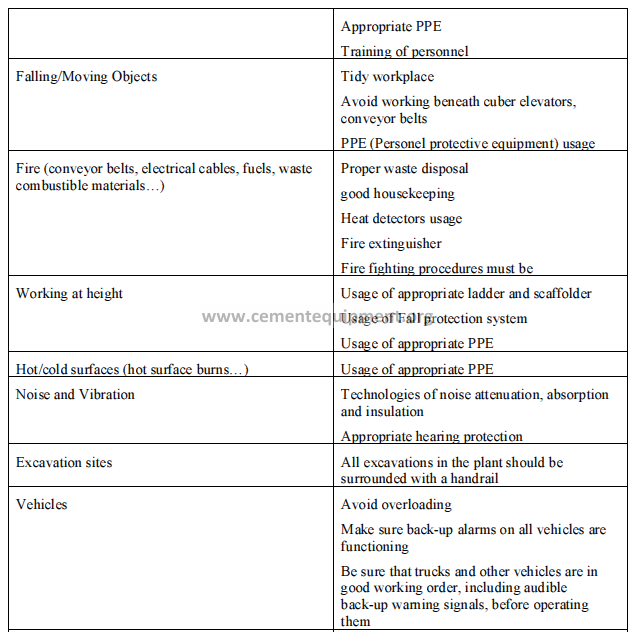
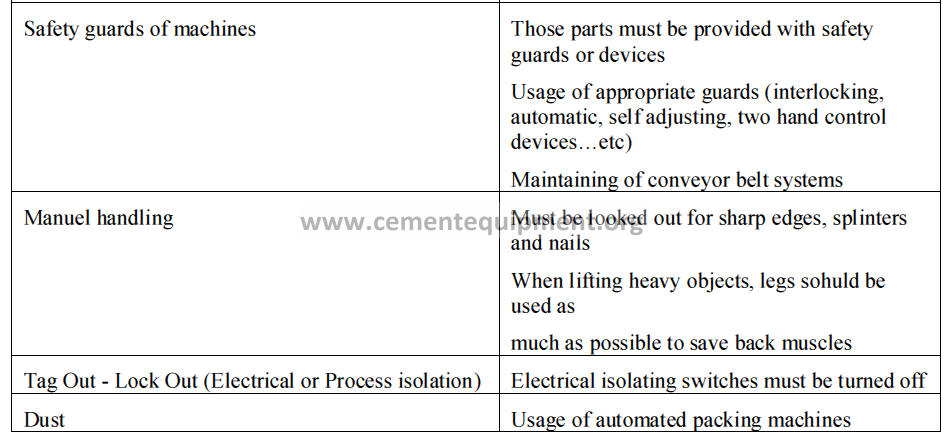
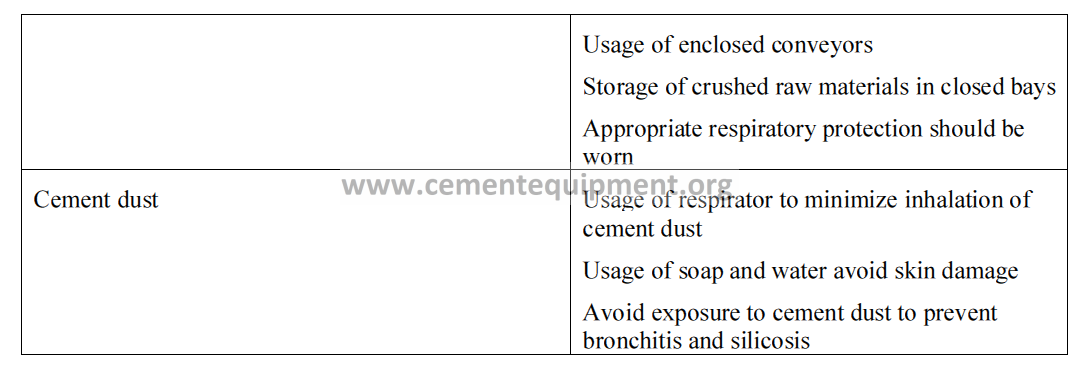
CONCLUSIONS
The cement manufacturing industry is labor intensive and uses large scale and potentially hazardous manufacturing processes (Marlowe and Mansfield 2002). Therefore, health and safety is the number one priority in for the cement industry for its employees, contractors, end-users and those who are neighbors to its operations (Tomar 2014.) Exposure to dust and high temperatures, contact with allergic substances, and noise exposure can be defined as hazards associated with health; while falling
/ impact with objects; hot surface burns; and transportation, working at height, slip/trips/falls can be defined as hazards associated with safety.
It is the most critical issue that ensuring a health and safety culture in workplaces. For this purpose, health and safety policy should be adapted with other policies of the company. Additionally, risk management policy of company should be developed, and risk assessment should be performed regularly and efficiently.
not only limestone but also clay and sometimes iron ore also need to put in the raw mixed
Very nice information and motivation effect
I am so happy I found your blog and I absolutely love your information about the accupational health and safety in cement industry. I liked and it is wonderful to know about so many things that are useful for all of us! Thanks a lot for this amazing blog!!
Thank you for this blog.
Thanks for the important information
awesome content, appreciate you posting this 🙂